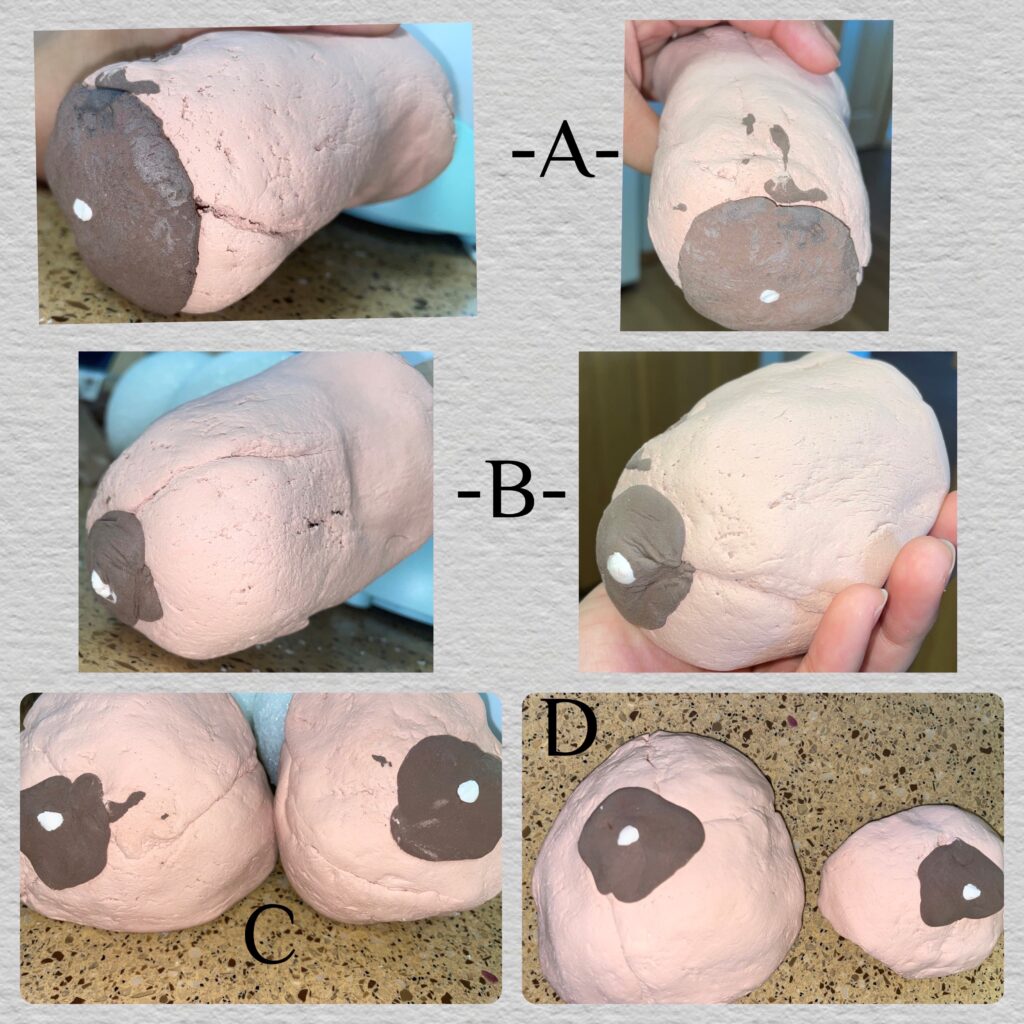
My steam project will be covering the following objectives, understanding the role of hormones in lactation as well as explaining how milk production is induced and maintained. Lactation is the production of milk by the mammary glands. Hypoplasia of the breast or insufficient glandular tissue is when the shape and size of the breast are not fully developed during puberty. Because of this it can cause issues with lactation. Hypoplasia of the breast gives the appearance of a small empty looking breast. The size of breast does not determine how much milk a woman can produce, it is determined by the amount of glandular tissue is in the breast. Towards the end of pregnancy, the hypothalamus is simulated to release prolactin releasing factors by; placental estrogen, progesterone, and human placental lactogen. Prolactin releasing factors simulates the anterior pituitary to release prolactin then 2-3 days later true milk production starts.
Physical signs that may indicate insufficient glandular tissue are if they are more than a 4cm (about 1.57 in) flat space between breasts, one being naturally larger than the other, tubular shaped breasts (narrow tube like), overly large areolae, and no changes in the breast in pregnancy and afterbirth or either or. People with insufficient glandular tissue may consider improving their appearance by having a surgical procedure to enhance the size, location, or shape and lift the breasts. Implants may be included in this procedure; they are placed behind the muscle of the chest wall. Breast reductions and breast lift are also included in this procedure.
Pregnancy can usually bring the growth of the mammary tissue, as well as the milk making tissue (glandular tissue). Lack of alveolar glandular growth results in low milk production. It’s estimated 5-15% of breastfeeding mothers experience chronic lactation insufficiency. Breast milk is rich in IgA antibodies. IgA is resistant in digestion, so this protects infants from bacterial infection. Breast milk encourages bacterial colonization of infants gut as well as has a natural laxative effect that helps cleans infant’s bowel of meconium. Fats and iron are better absorbed, and breast milk’s amino acids are easily metabolized comparing to cow’s milk.
Lactation is sustained by simulation of nipples during suckling, this happens after prolactin is release wanes after birth. The suckling motion simulates mechanoreceptors in the nipple which causes afferent impulses being sent to the hypothalamus to release PRF’s. The anterior pituitary increases release of prolactin that then simulates the production of milk for the next feeding. The release of oxytocin from the posterior of the pituitary is triggered by the hypothalamus that is prompted by suckling. Let down reflex is the ejection of milk from alveoli of mammary gland, oxytocin causes let down reflex.
Breastfeeding can be tough on an individual with insufficient glandular tissue; however, it is not impossible. Some tips to consider producing enough milk for an infant is a supplemental nursing system, breast pump, herbal supplements, or prescription medication from your physician. A supplemental nursing system allows you to experience breastfeeding while providing additional food to your baby. To increase milk production, herbal supplements can be taken, and some may be taken during pregnancy, this helps grow and increase milk making tissue. The breast pump is “mechanically stimulated through pumping to mimic an infant suckling and taking a dopamine antagonist to promote prolactin” (Power point lecture slides reproductive system). “Your physician may allow you to take a prescription medication that increases the prolactin (the hormone of milk production) level in the pituitary gland, thereby making more milk” (Mahmee, para 10). Formula is also a great option to turn to if not successful in producing milk, remember a fed baby is a happy baby.
Citations
Shere, H., Weijer, L., Dashnow, H., Moreno, L. E., Foxworthy Scott, S., & Baker, H. (2021). Chronic Lactation Insufficiency Is a Public Health Issue: Commentary on “We Need Patient-Centered Research in Breastfeeding Medicine” by Stuebe. Breastfeed Med 2021;16:349-350. Breastfeeding medicine : the official journal of the Academy of Breastfeeding Medicine, 16(12), 933–934. https://doi.org/10.1089/bfm.2021.0202
Mahmee. (n.d.). Retrieved April 19, 2023, from https://www.mahmee.com/articles/insufficient-glandular-tissue-igt
Insufficient glandular tissue (breast hypoplasia). Insufficient glandular tissue (breast hypoplasia) | Australian Breastfeeding Association. (n.d.). Retrieved April 19, 2023, from https://www.breastfeeding.asn.au/resources/insufficient-glandular-tissue-breast-hypoplasia
Clinical update and treatment of lactation insufficiency – journalagent. (n.d.). Retrieved April 20, 2023, from https://jag.journalagent.com/ias/pdfs/IAS_21_1_19_28.pdf
Reproductive system Lecture slides

Mary’s project focuses on the roles that hormones play in lactation, as well as how the milk is produced. She creatively uses clay to mold different examples of the breast and how it may look. One of the conditions she explains is hypoplasia (an insufficient granular tissue) which is due to improper growth of the breast during puberty. Mary goes on to explain some of the symptoms of this which include a 4cm flat space between the breasts, the breasts being different in size, narrow shaped breasts, large areolae, and no changes in the breast during or after pregnancy. Next, it is explained how breast milk is produced. This happens by the infant suckling at the nipple which stimulates mechanoreceptors to send impulses to the hypothalamus to release PRF’s. The anterior pituitary releases prolactin which stimulates the production of milk in the breast. So, to maintain breast milk production, the infant would need to continue to suckle on the nipple which starts the process all over again. A person with insufficient granular tissue may have trouble breastfeeding, but there are steps to take in order to help produce milk. These tips include using a breast pump, herbal supplements, or medication that can be prescribed from your doctor. If none of this helps, formula is always another option to try. Overall, Mary did a great job on her project. It was really creative and interesting to read!